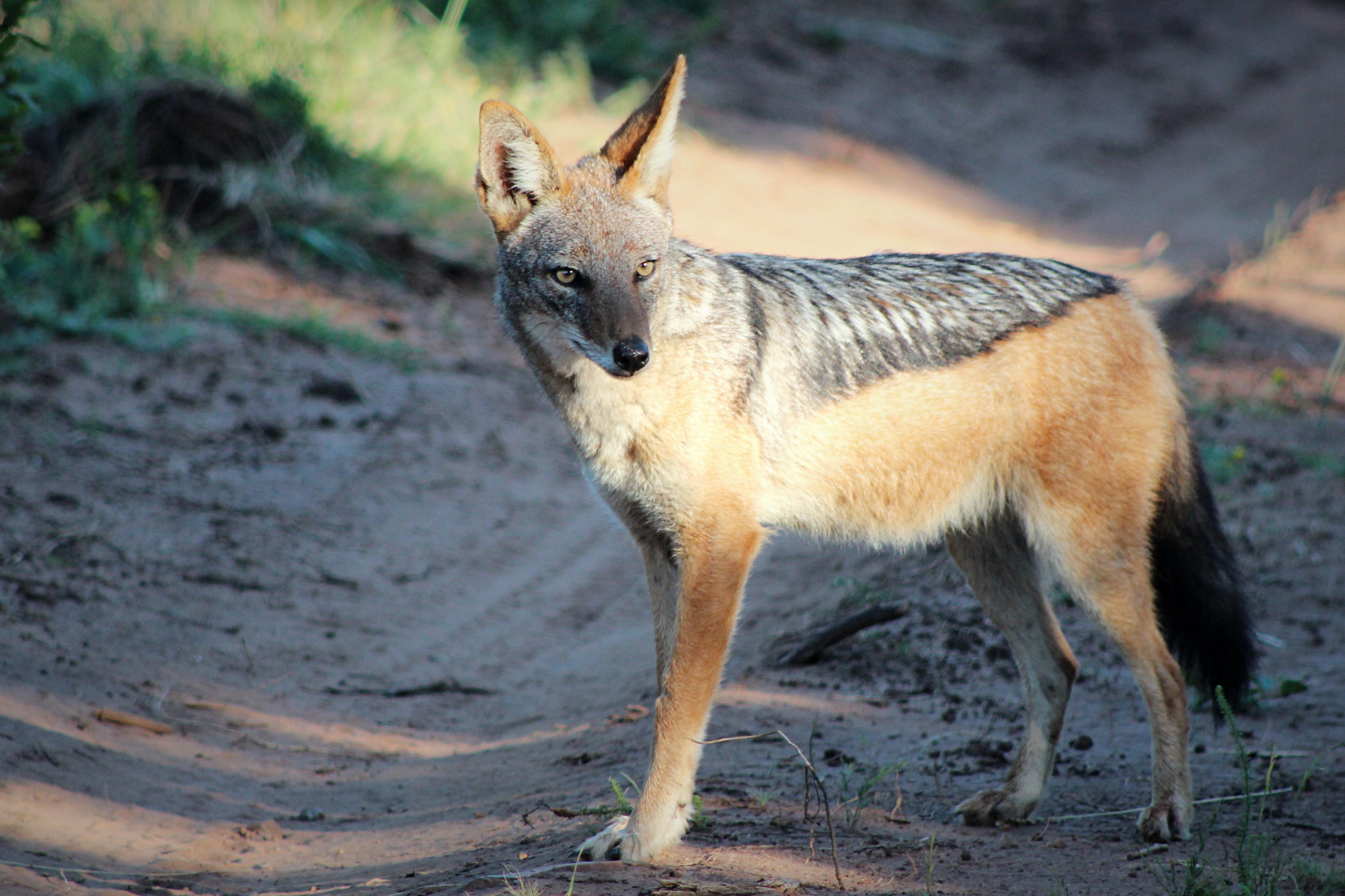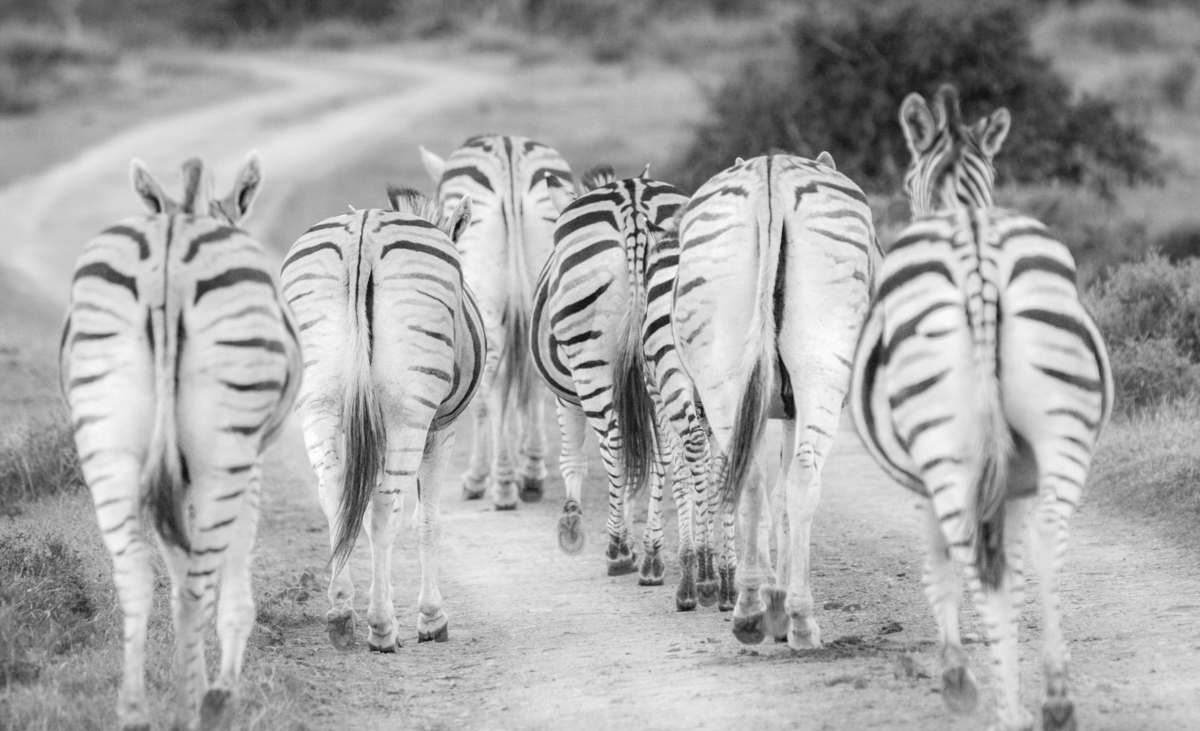BBC Earth South Africa: Sneakiest Animals of the Savanna
This fabulous BBC Earth South Africa video focusses on the sneakiest animals of the savanna. It was filmed exclusively at Kariega Game Reserve in South Africa's malaria-free Eastern Cape by the BBC Earth team. The focus of this episode is to show how specific African animals have adapted to survive in their environment using various sneaky tactics. Their sneakiness helps them to find food, ensure genetically diverse offspring and protect themselves from predators.
Black-Backed Jackal: Sneakiest Animals of the African Savanna
Black-backed jackals are one of the two species of jackal found in southern Africa. They are more common than their larger cousin, the side-striped jackal. Black-backed jackals are a very distinct canine with a dog-like appearance, reddish-brown fur and distinguishing black back. These cunning and adaptable animals inhabit most biomes, from arid deserts to lush forests.
These jackals display bold and sneaky behaviour including risky feeding habits and outwitting larger predators that might want to harm them. Black-backed jackals have been seen stealing prey from a lion's kill, scavenging on dead matter and hunting for their own prey which can include small antelopes, rodents, snakes, lizards and birds. They will even supplement their diet with termites and fruit if needed, which larger predators such as lions and leopards would never do.
Learn more about these cunning canines in our previous video blog on the Top Five Black-Backed Jackal Facts.

Chacma Baboons: Sneakiest Animals of the South African Savanna
Chacma baboons, also known as Cape baboons, are highly adaptable to their surroundings and circumstances. These old world monkeys are family-orientated and can form very large troops of between 20 and 80 baboons. The individuals in the group stick together in their daily tasks to find food and everything else that comes with living collectively. There is a strict hierarchy in the troop and only the dominant male is allowed to mate with the females to ensure that the best and strongest genetics are passed on to the next generation. However, there are many young males within the troop that are always waiting until the alpha male is out of sight so that they can try their luck with the female members of the troop!
The alpha male doesn't like the youngsters and females flaunting his power. Fights can break out between the alpha male and the young males which can leave them maimed or even dead. The alpha will also instil fear into the females to prevent them from letting the youngsters have their way with them. This will hopefully keep the females exclusive to the alpha whose main goal in life is to sire as many youngsters as possible in his lifetime. If the younger males are sneaky enough they might still have a chance to sire some offspring in between all the commotion.
Learn more about these primates in our previous video blog about chacma baboons.

BBC Earth South Africa Video Includes Theories on Why Zebras Have Stripes
Zebras are one of the most iconic animals on the African continent. They are beautiful to watch and photograph while on a Kariega safari. Their black and white striped hides have intrigued biologists, and predators, for centuries.
Why do zebras have this weird pattern? What is it used for? The BBC Earth presenter Hannah Stitfall shares some of the theories in the video. Other biologists postulate that the stripes help to camouflage the zebra, as when it is extremely hot the heat waves help to dissolve the animal's outline, making them more difficult for a predator to see them clearly. Another theory is that when a herd of zebras are standing and moving around together, the stripes will confuse a predator as they can't make out where the one zebra starts and the other one ends.
Perhaps this is where one of the collective names - a dazzle of zebras - comes from?
Another theory is that the black and white stripes are used by zebras to thermo-regulate. Some scientists believe that as the black stripes attract heat and the white stripes expel heat this forms a cooling system which reduces the zebra's body temperature.
Have you ever noticed creature habits either during your amazing Kariega Game Reserve safari that might seem a little bit sneaky? Please share these with us and we will explain these behaviours or traits to you in more detail.
Four Episodes in BBC Earth South Africa Series
This four part BBC Earth South Africa Wild Lands series includes the following four episodes:
- Deadliest Predators – Featuring hippos, lions and servals.
- Strongest Animals – Featuring elephants, dung beetles and rhinos.
- Weirdest Animals – Featuring secretary birds, millipedes and giraffes.
- Sneakiest Animals – Featuring black-backed jackals, chacma baboons and zebras.
Be sure to subscribe to our blogs and join our Facebook, Instagram and Twitter communities to make sure you don't miss our updates.
You are also welcome to submit your wildlife photographs taken at Kariega Game Reserve to our 2020 Facebook and Instagram photo competitions. The prize for each winners is an all-inclusive two night stay for two people at Ukhozi Lodge. Read here to find out how to enter:
Photo credits to Jo Haesslich.










